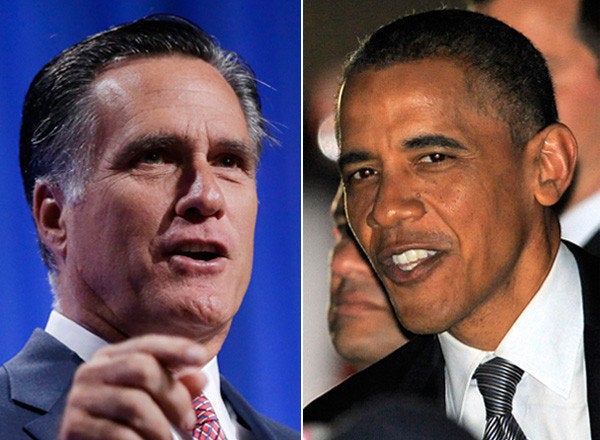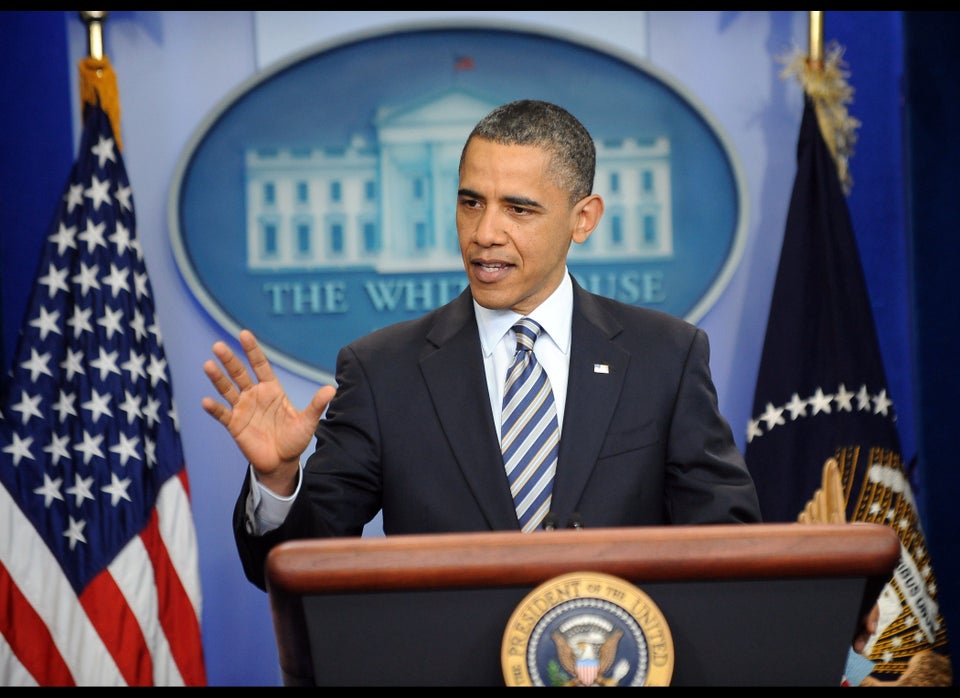
WASHINGTON -- A batch of new polls from two key battleground states produced some of the largest leads yet for President Barack Obama, drawing criticism from the campaign of Republican nominee Mitt Romney.
In Ohio and Florida, the new surveys from The Washington Post and the polling partnership of CBS News, The New York Times and Quinnipiac University show Obama leading by margins approaching double-digits.
While the margins produced by these and other surveys vary, they collectively point to a consistent underlying trend: Big gains in enthusiasm among Democratic partisans have helped boost Obama since the party conventions.
In Florida, a state widely considered a must-win for Romney, results ranged from a whopping 9 point Obama lead (53 to 43 percent) on the new CBS/Times/Quinnipiac poll, to a 4 point Obama advantage on the Washington Post poll (51 to 47 percent), to a much narrower 1 point edge for Obama (48 to 47 percent) on a Tampa Bay Times/Miami Herald/Mason Dixon poll.
Most of the other polls have been closer to the Post and Mason-Dixon results. The HuffPost Pollster tracking model, which combines results from all public polls -- national and statewide -- to produce an estimate for each state shows Obama leading in Florida by just over five percentage points.
In Ohio, the two new live interviewer surveys both give Obama wide leads. The CBS/Times/Quinnipiac poll shows him leading by 10 percentage points (53 to 43 percent), while the Washington Post poll has Obama ahead of Romney by 8 (52 to 44 percent).
A third survey conducted by Gravis Marketing, a call center whose automated surveys do not sample cell phones and that consistently produces more Republican-leaning results, found a smaller lead for Obama (45 to 44 percent). The Gravis numbers were the closest margin for Romney among the recent polls. Three other Ohio polls released in the last week gave Obama leads varying between 3 and 7 percentage points.
The HuffPost Pollster tracking model, which also corrects for pollster "house effects" -- consistent differences across polling firms -- currently gives Obama an advantage of just over six percentage points.
On Monday, Romney campaign pollster Neil Newhouse joined a chorus of conservative pundits in questioning the partisan and demographic composition of recent polls in battleground states. "I don't think [the polls] reflect the composition of what 2012 is going to look like," Newhouse told the Hill.
Both the CBS/Times/Quinnipiac and Washington Post polls reported the partisan composition of their samples, the percentages of likely voters who said they think of themselves as Democrats, Republicans or independents. Conservative critics have been comparing the party identification results from recent polls to the partisanship expressed by voters surveyed by exit pollsters in 2008, typically focusing on the margins separating Democrats and Republicans. In both Ohio and Florida, the Washington Post poll found the Democratic advantage to be slightly narrower than 2008, while the new CBS/Times/Quinnipiac polls show it to be slightly wider in Ohio and considerably wider in Florida.

The most notable difference, however, is that all of the current polls are showing more independents among likely voters than exit polls found had voted four years ago. So in absolute terms, the percentages of both Democrats and Republicans fall short of the exit poll estimates from four years ago. That difference is not surprising. Voters typically express a slightly greater sense of partisanship moments after voting than they do weeks or months before voting.
Contrary to the assertions of some commentators, the pollsters who conduct the CBS/Times/Quinnipiac and Washington Post surveys do not directly set the partisanship or the demographics of their likely voter samples. They first sample all adults in each state, weighting the demographics of the full adult sample (for characteristics such as gender, age, race and education) to match Census estimates for the full population.
They then use different methods to select "likely voters" -- those who indicate they are likely to vote -- without further adjusting their characteristics. If the partisanship or demographics of the likely voters changes, it tells us something about the attitudes that will drive voter turnout.
The means used to select those likely voters vary across polls, and are arguably as much art as science, but the most recent results provide an important measure of rising Democratic enthusiasm. "Nearly half of Florida Democrats now say they are more enthusiastic about voting than in the past," CBS News reports, "up from 24 percent at the start of August." National surveys like Gallup and the Pew Research Center have tracked similar trends.
No measure of voting intention is perfect and, as CBS also reports, Romney retains some key advantages among other cuts of the most engaged voters. "The race is far closer," they add, "among voters who say they are paying a lot of attention to the campaign - it's a tie among that group in Ohio, and Mr. Obama's lead in Florida shrinks to four among this subset."
For the moment, however, surveys continue to track rising Democratic enthusiasm, and those changes explain much of the improvement for Obama over the last month.

